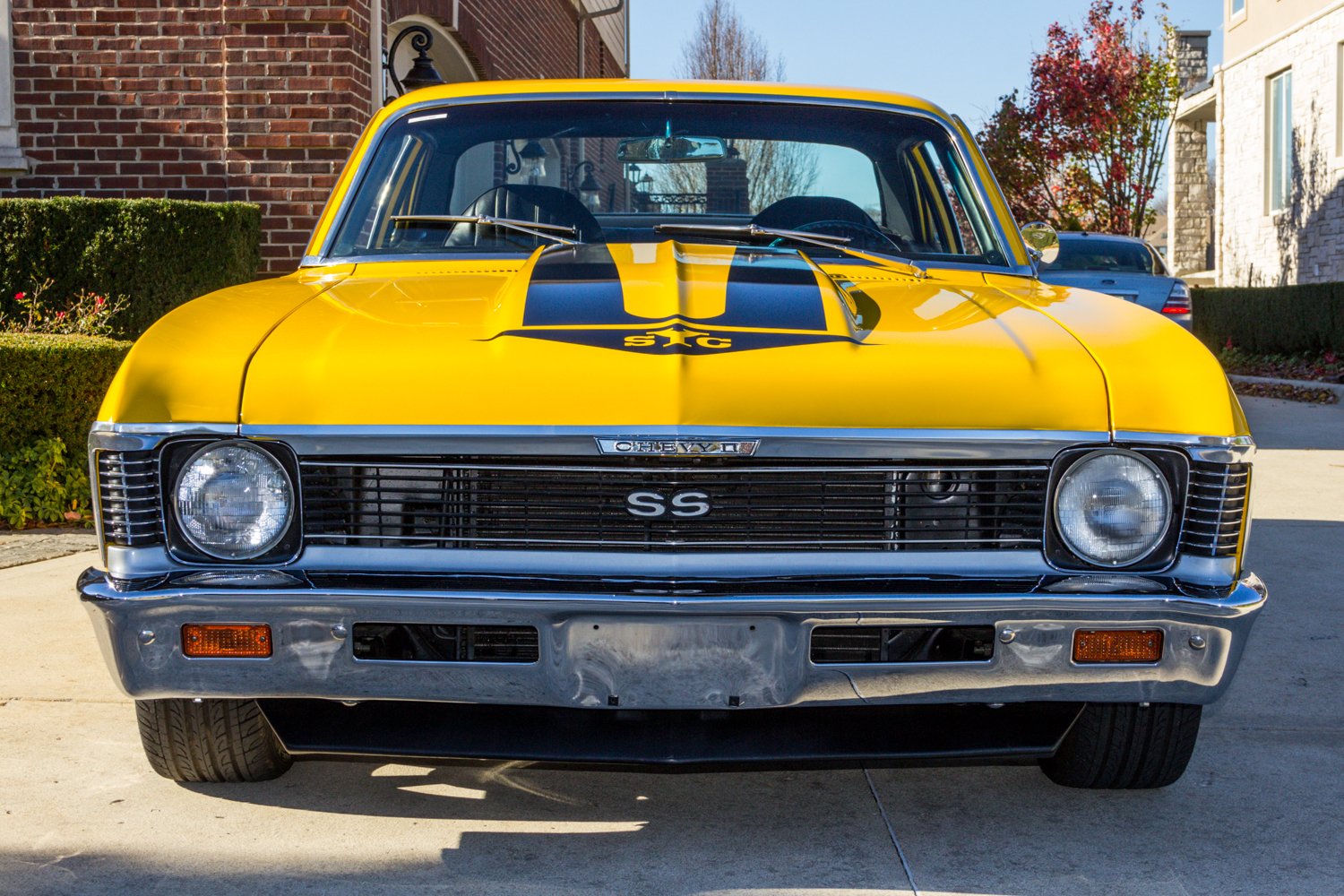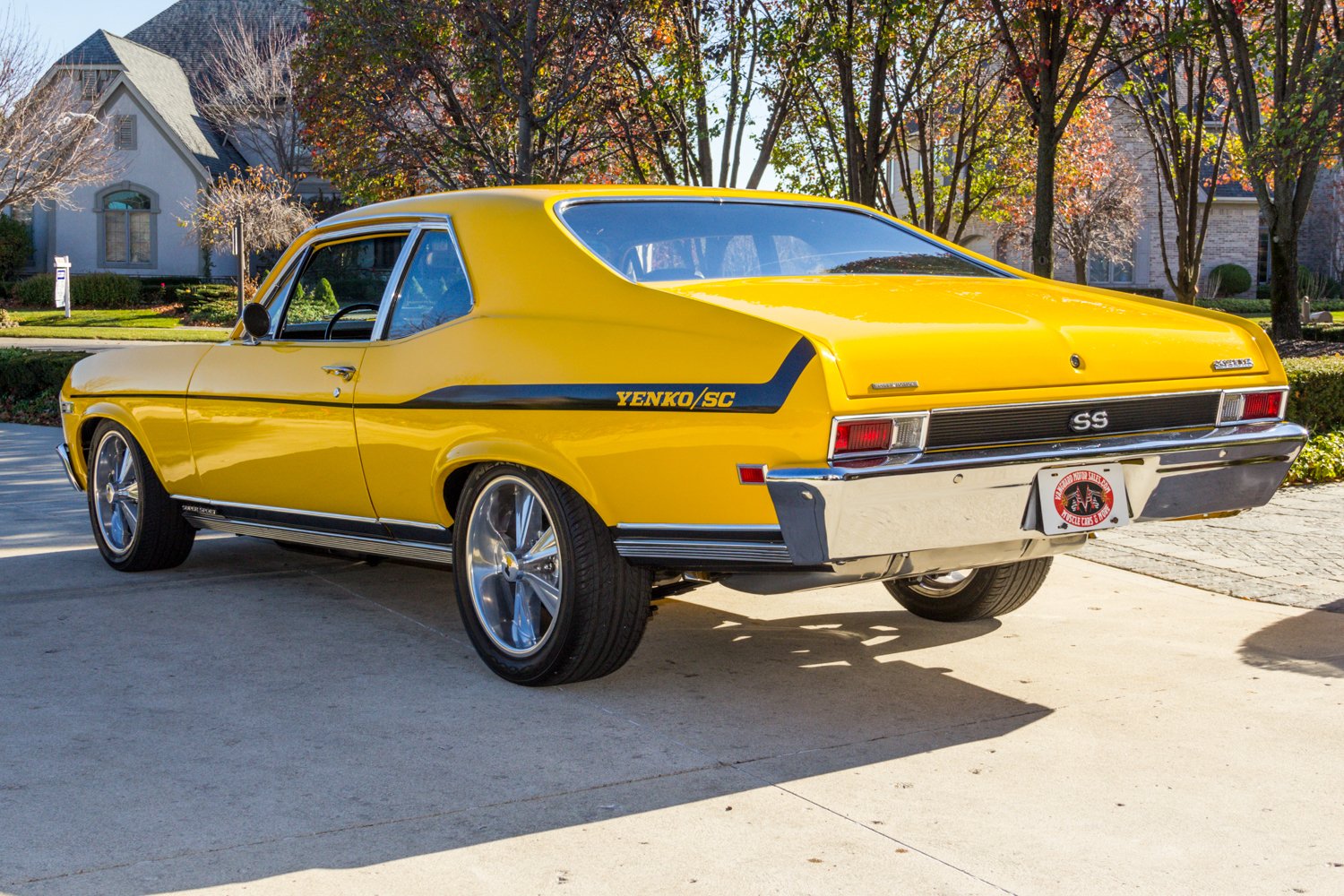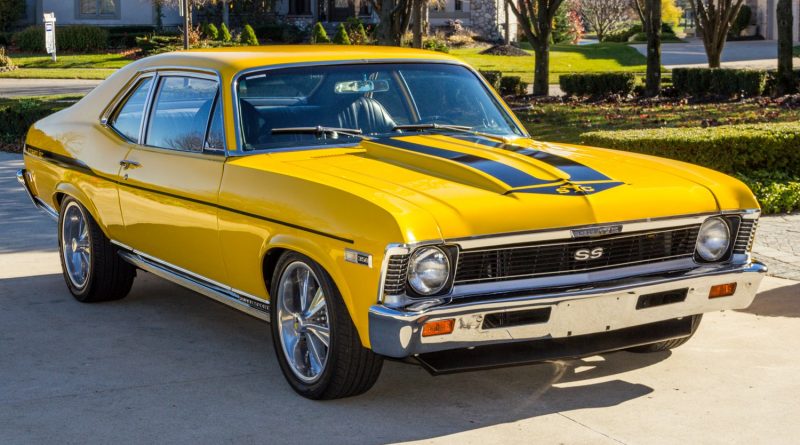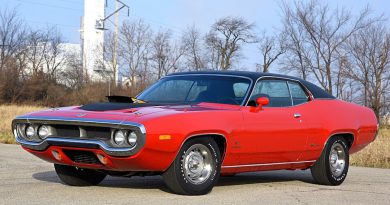1968 Chevrolet Nova
The Chevrolet Chevy II/Nova is a small automobile manufactured by Chevrolet, and produced in five generations for the 1962 through 1979, and 1985 through 1988 model years. Nova was the top model in the Chevy II lineup through 1968. The Chevy II nameplate was dropped after 1968, with Nova becoming the nameplate for all of the 1969 through 1979 models. Built on the X-body platform, the Nova was replaced by the 1980 Chevrolet Citation introduced in the spring of 1979. The Nova nameplate returned in 1985, produced through 1988 as a S-car based, NUMMI manufactured, subcompact based on the front wheel drive, Japan home-based Toyota Sprinter.

The 1968 models were fully-redesigned with an extensive restyle on a longer 111-inch wheelbase that gave Chevrolet’s compacts a chassis that was just one inch shorter than that of the midsize Chevelle coupe. The station wagon and hardtop sport coupe were discontinued, the former in line with an industry trend which left AMC the only American maker of compact station wagons until Chrysler rejoined the market in 1976 (the 1966–70 Ford Falcon wagon was actually midsize, using a bodyshell identical to the Fairlane wagon’s). One notable change was the front subframe assembly — as compared with Ford, Chrysler and AMC, in whose cars the entire front suspension was integrated with the bodyshell, a separate subframe housing the powertrain and front suspension (similar to the front part of the frame of GM’s full-size, full-framed vehicles) replaced the earlier style.

The 1968 Chevrolet Chevy II Nova had a freshly contoured body that featured a new “tunnel effect” roofline. Bodies were longer, lower, and wider, displaying the trendy long-hood/short-deck shape. Chevrolet boasted of its “clean sweep in styling, performance and economy” with the 1968 Nova.

Still, the Nova SS offered plenty of fun. A 295-horsepower Turbo-Fire 5.7L LT1 350ci V8 with Electronic Fuel Injection was standard. There were simulated air intakes on the hood, black accents on the grille and decklid panel, and special emblems and badges. A floor-shifted three-speed gearbox was available, as were a four-speed manaul and Powerglide automatic.

Inside this 68 Nova you will find new door panels, seat covers, headliner, carpet, door sills etc. RPM’s are monitored from a BOSCH tachometer while your water and oil are supplied from lower dash gauges. Gear choice is selected from the B & M ratchet shifter. The black bucket seat interior looks great against the Fashion Gray exterior paint. The Nova is equipped with front seat belts only. A new AM/FM radio was installed during the restoration.

There is an urban legend that the Nova sold poorly in Spanish-speaking countries because “Nova” means “doesn’t go”. This isn’t true—”nova” in Spanish has the same celestial meaning that it does in English. While “no va” does mean “won’t go”, few Spanish speakers would interpret “Nova” as “no va”, the difference is a bit like saying “Notable” would be a poor name for a dinette set as it could be read as “no table”. In fact, the Nova sold well in several Latin American countries.

The 1985-88 Novas have attracted virtually zero interest from hobbyists—they just aren’t very interesting cars, even in twin-cam form. However, they are exceptionally well built, and if you find a survivor, it’ll probably be an easy old car to live with.




